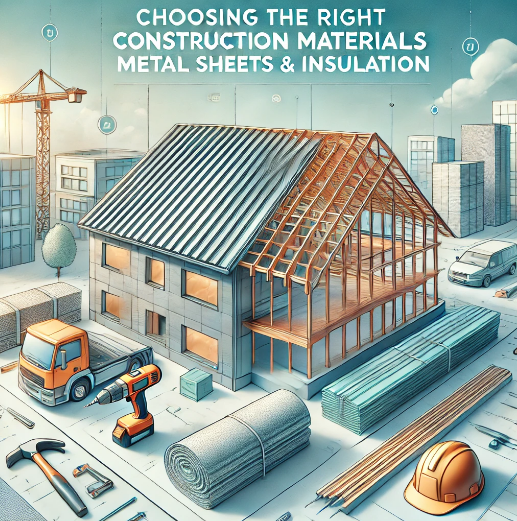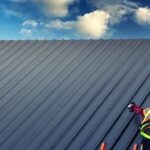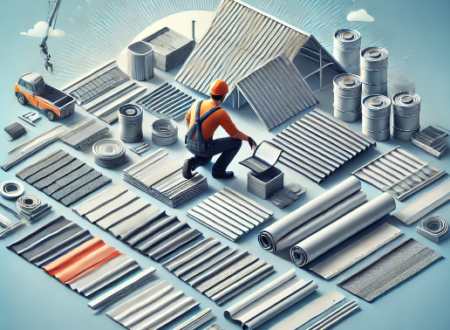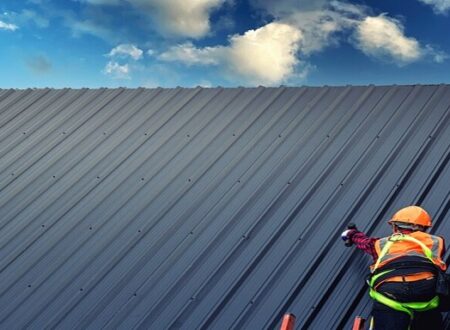Getting the right material is among the most critical aspects of the construction project. Among the most crucial materials used are metal sheets, and the other is insulation. These materials affect the life period, efficiency of using resources such as energy, and occupants’ well-being in a building. Thus, it is critically important to know what decision is made.
First, metal sheets, such as galvanized steel and aluminum, are used in roofing and siding. Products from them provide strength and protective gear, thus enabling durability when manufacturing other products. Therefore, the insulation aids in regulating the building’s temperature, energy use, and cost of services. Proper insulation can significantly affect your room’s comfort regardless of the climate outside. Insulation with a high R-value factor is worth the investment.
In this article, we would like to discuss primary factors that should be considered when choosing metal sheets and insulation. With these factors in mind, there is a higher chance of coming up with the right decision regarding cost, energy, and life span for your project.
Understanding Metal Sheets
Metals are used for construction, including rooftops, walls, and even flooring through metal sheets. The two most commonly used metal sheets are galvanized steel and aluminum. These are compact, durable, and can withstand most of the weather conditions prevalent in the region.
When selecting metal sheets, one of the primary issues to determine is the level of their genuine durability. Galvanized steel has a good measured resistance to rust and, thus, can be used in most places, especially those exposed to rain or moisture. While aluminum is light and does not rust, it is suitable for areas near the sea. Yet aluminum generally costs a little more than galvanized steel. Hence, location and available cash should be considered when making a decision.
The other thing that could be important is the metal sheet’s thickness. Thicker metal plates are more powerful and enduring than thin ones, but they cost more. Consider how much load your structure will take and whether you need to strengthen your building. Nevertheless, thinner sheets of metal may suffice for constructing small buildings or when the building has relatively low traffic.
The aesthetic appeal of metal sheets also matters. The metal sheets are available in various colors and coatings to enable the proprietor to select the building class to develop. Some people might care about how the final result looks; in that case, they should go for a finish that would fit in the rest of the interior.
In conclusion, it is asserted that no last but critical consideration ensures you check your climate. The metal sheets may bend when spreading or even going in when the climate is extremely hot or cold. Select a type of metal capable of attaining these changes in temperature without affecting the architectural form.
What is Insulation?
Heating and cooling are crucial aspects of a building; thus, insulation remains a vital component of your comfort. It helps insulate your building and maintain the temperature during colder and hot months. Insulation, in reality, operates in a way that helps to reduce the flow rates of heat transfer, which makes it crucial in any construction project.
In the following web link, most of the types of insulation material are reflected, but the most frequently used ones include fiberglass, foam board, spray foam, etc. Each has its merits depending on the specific project requirements you are working on.
One must inspect a few things when choosing the right insulation material, including the R-value. The R-value is a unit that expresses the ability of this material to restrict heat exchange. This means the more significant the R-value, the more effectively the insulation can insulate the building properly. In colder regions, you require more insulation to provide that R-value to keep the building warm. On the other hand, in warm climates, a lesser R-value requirement may be enough.
Benefits of Galvanized Steel and Metal Sheets
That is why galvanized steel and metal sheets are commonly used in construction, as they have many advantages. First of all, it has been reinforced with zinc, meaning this steel can hardly rust. It does not allow water to get to the surface; it is ideal for installing in places that experience rainfall or high humidity. This makes it last longer than other materials used in construction work.
Second, metal sheets are stiff and can bear considerable force of pressure. They resist climate change; for instance, storm and snowfall challenges can be managed well. This makes them require less attention when maintaining them, and they are also cheaper to maintain than the other types in the long run.
Moreover, metal sheets are lightweight. This makes them easy to install, saving both time and labor costs. They are also eco-friendly because they can be recycled at the end of their life.
Lastly, galvanized steel offers excellent value. It combines strength, protection, and cost-effectiveness, making it a top choice for roofing, siding, and other building projects. Galvanized steel and metal sheets are reliable, long-lasting, and versatile.
Key Considerations for Selecting Metal Sheets and Insulation
When choosing metal sheets and insulation for a project, several key things must be considered. These factors will help you make the best decision for your building.
Durability of Metal Sheets
Like galvanized steel, metal sheets are strong and last a long time. They resist rust and damage, even in challenging weather. Make sure the metal you choose can handle your climate. For example, aluminum is good in coastal areas because it resists corrosion.
Cost vs. Quality
Think about both the initial cost and the long-term value. While some metals may cost more upfront, they save money on repairs and maintenance. Galvanized steel is an excellent choice for its durability and value.
Insulation’s R-Value
The R-value tells you how well the insulation resists heat flow. Higher R-values mean better insulation. Choose insulation with a high R-value in cold climates to keep the building warm.
Energy Efficiency
Both metal sheets and insulation play a significant role in energy efficiency. Proper insulation can reduce heating and cooling costs. Metal sheets help reflect heat, keeping your building cooler in summer.
Installation Ease
Metal sheets are lightweight and easy to install. This saves time and money on labor. Insulation should also be easy to install, with no gaps or leaks.
Moisture Control
Choose insulation that protects against moisture. Metal roofs can form condensation without proper moisture control, leading to mold and damage. Spray foam insulation works well for this.
Considering these points, you can choose the proper metal sheets and insulation. Each factor is essential in ensuring your building is durable, comfortable, and energy-efficient.
The Importance of Proper Installation
The finest metal sheets and insulation will not meet ideal results if improperly installed. It is perfect to ensure that all parts fit and function as required to prevent mishaps during installation. Before laying metal sheets, they should be appropriately equipped with little or no spaces in between to allow air and moisture inside.
All cracks in windows, doors, and corners must be closed for insulation. This shows that if the areas mentioned above are not well insulated, heat and air will be able to come in, and this will not favor the energy status of your building. Ensure all the insulation is tightly packed and covers all areas required to offer complete protection.
Environmental Considerations
Today, people are focusing on using environment-friendly construction materials, and both these core materials, metal sheets and insulation, have environment-friendly types. Take metal roofing, for instance; while it is manufactured from metal that has been recycled, once it has served its helpful term, it can also be recycled. You should also opt for recycled metal sheets as any extra metal material will have a poor way of returning to the environment.
Regarding insulation, some materials cover this aspect more effectively than others. Cellulose insulation, mainly sourced from recycled paper, is a perfect example of an earth-friendly product. It is also appropriate for high R-value and energy-efficient structures and designs. Cotton and wool insulation are also renewable and non-hazardous, making them great for green homeowners.
Using such materials of production as those used here, it will be felt that energy is conserved, and the general impact of the building on the environment will be considerably minimized.
Cost Considerations
It is almost always essential to consider the cost of a particular type of building material. Metal sheets, particularly top-quality ones like galvanized steel or aluminum, may be costly. They are, however, more durable than the material used to make other products in the market; therefore, they can be considered an investment if used for the long term. Like any other material made of metals, sheet metals do not require frequent maintenance; hence, repairing them will not be substantial.
Insulation materials can also vary in price. When calculating costs, consider both the upfront cost and the long-term savings. Energy-efficient insulation can help reduce your heating and cooling bills over time.
Avoiding Common Mistakes
Some general mistakes are made when selecting metal sheets and insulation for constructing metal buildings. This way, you will be more informed about your project and can make the proper decisions.
Ignoring Local Building Codes
It is essential to constantly check local laws before buying the materials. Cooling systems require that metal sheets and insulation reach set safety and efficacy standards.
Choosing the Cheapest Option
It’s understood that most people would want to save money, so some of these materials may not last long. In the long run, better material quality, such as investing in durable galvanized steel or finding good insulation, will be cheaper per unit.
Not Considering the Climate
Be very careful when selecting metal sheets, ensuring that they suit your area’s climate. For instance, aluminum is preferable in the coastal regions while the galvanized steel preferred areas are in the wet areas.
Leaving Out Implementation Consequences
If it’s done incorrectly, the pipework can cause leakages and waste a lot of energy. A professional should always be contacted if one is in a dilemma about installing the insulation or the metal roofing.
Oblivion of energy efficiency
Never underestimate the importance of insulation for energy saving. Insulation with proper R-value retails comfort and reduces energy costs within a given building construction.
By avoiding these mistakes, you are protecting the health, safety, efficiency, and durability of your building from deteriorating due to non functioning metal sheets and insulation.
Conclusion
The selection of the proper metal sheets and the appropriate insulation go hand in hand with the success of the particular construction project. It impacts the structure’s power performance, reliability, and even life duration. By including exemplary aspects like the durability, cost, type of insulation to be used, and its effects on the surrounding environment, good decisions will be made for the well-being of your building in the days to come.
Therefore, it is essential that you ensure that you pick the right material for a special purpose. The proper metal sheets and insulation will afford a comfortable, well-insulated, long-lasting space.





